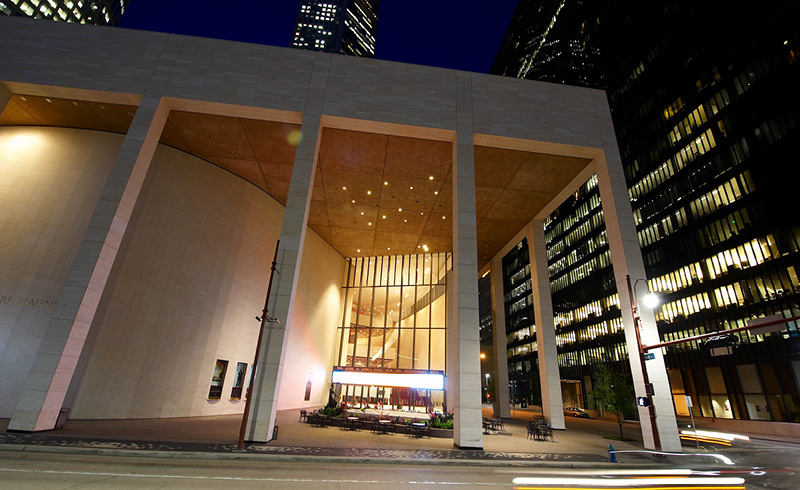
June 25, 2010
Music From the Outside In
Today’s post was written by our brand new Intern, Keith. A recent graduate of Rice University, Keith is hanging out in our Jones Hall offices and soaking up all he can about working for an arts organization. This time around, he shares his view about engaging new audiences and why it’s important for Orchestras to do so. Keep an eye out for more blog posts from Keith in the coming months!
Here’s one thing they don’t teach you at school: How to build an audience. I recently graduated with my master’s degree in music performance, and I was critiqued and challenged in many ways. But one question was never addressed: “Why put on a performance if nobody comes?”
 An average flyer for a school recital reads like this: “Tonight!!! Violin Recital. Hear works by Mozart, Beethoven and Schumann. Reception to follow.” It’s boring, but only because it’s designed to get their friends to stop practicing and come hear a show. It offers nothing more than the promise that there will in fact be free music and food, which is usually good enough for starving students. In the real world, it doesn’t work.
An average flyer for a school recital reads like this: “Tonight!!! Violin Recital. Hear works by Mozart, Beethoven and Schumann. Reception to follow.” It’s boring, but only because it’s designed to get their friends to stop practicing and come hear a show. It offers nothing more than the promise that there will in fact be free music and food, which is usually good enough for starving students. In the real world, it doesn’t work.
At a time when Orchestras all over the world are trying to grab the attention of new audiences, they do in part still stick to what they know (said flyers, billboards, radio promotions, etc.) My question is: What does that really offer a potential new audience? It seems in this age of entertainment oversaturation, we need to provide something more engaging, more relevant.
Like an increasing number of classical musicians (and music fans in general), I did not grow up listening to classical music. The first CD I bought was the Fugees. I spent more hours dissecting the dizzying wordplay of Mos Def and Talib Kweli than the formal structure of a Beethoven Symphony. When I got a car in high school I promptly installed subwoofers and blasted Kanye West, as opposed to Mahler.
Which brings us to Kanye’s song “Gone”. In it he offers, “Maybe you can be my intern, and in turn, I’ll show you how to cook up summer in the winter.” These words have been ringing in my ears lately as I recently began working at the Houston Symphony as the Digital Media/Marketing Intern. In the spirit of Kanye, I’d like to amend his statement slightly: “Maybe you can be my intern, and in turn, I’ll give you valuable work experience directly related to your interests (and maybe even a job one day).”
Although I nabbed the coveted “close friends and relatives” demographic for my recitals, I rarely thought about how to attract new audiences. Or what audiences really want. Or what motivates people to seek out transformative artistic experiences. But what could be more important for a musician, or arts organization, to know?
Luckily, Orchestras have recently been leading the way in terms of reaching out to new fans. While venues like the Poisson Rouge in New York City cater to the hipster/crossover crowd, the Houston Symphony is reaching out to all the music-lovers in Houston.
Taking the music to the people is a great way to get them interested. This summer, the Sounds Like Fun! series had the symphony playing everywhere from churches to high schools. The Symphony Summer Nights Series (try saying that 5 times fast!) takes place at Miller Outdoor Theater, where fans can picnic on the hill while hearing great music. On that note, don’t forget that there are still three more concerts at Miller – including a 4th of July spectacular featuring the Texas Tenors.
Technology is also playing a part. Recent experiments by the Houston Symphony have put the audience in control and given them greater ownership of the experience. Houston’s first-ever “Tweetcert” sent specially written program notes in real time to concertgoers’ smart phones. Another concert let fans pick from a number of encores via text.
It’s been said that if Miles Davis didn’t turn his back on the audience, the Beatles wouldn’t have been able to invade so easily. People may feel that classical music turned its back on them, but it’s encouraging and fulfilling to be a part of an organization that tirelessly seeks out music lovers in new ways.






